Using Code Trends, you can analyze where and how often codes have been applied in texts.
When analyzing a single document, the text is divided into sections of equal length, and the frequency of selected words in each section is visualized in a line chart:
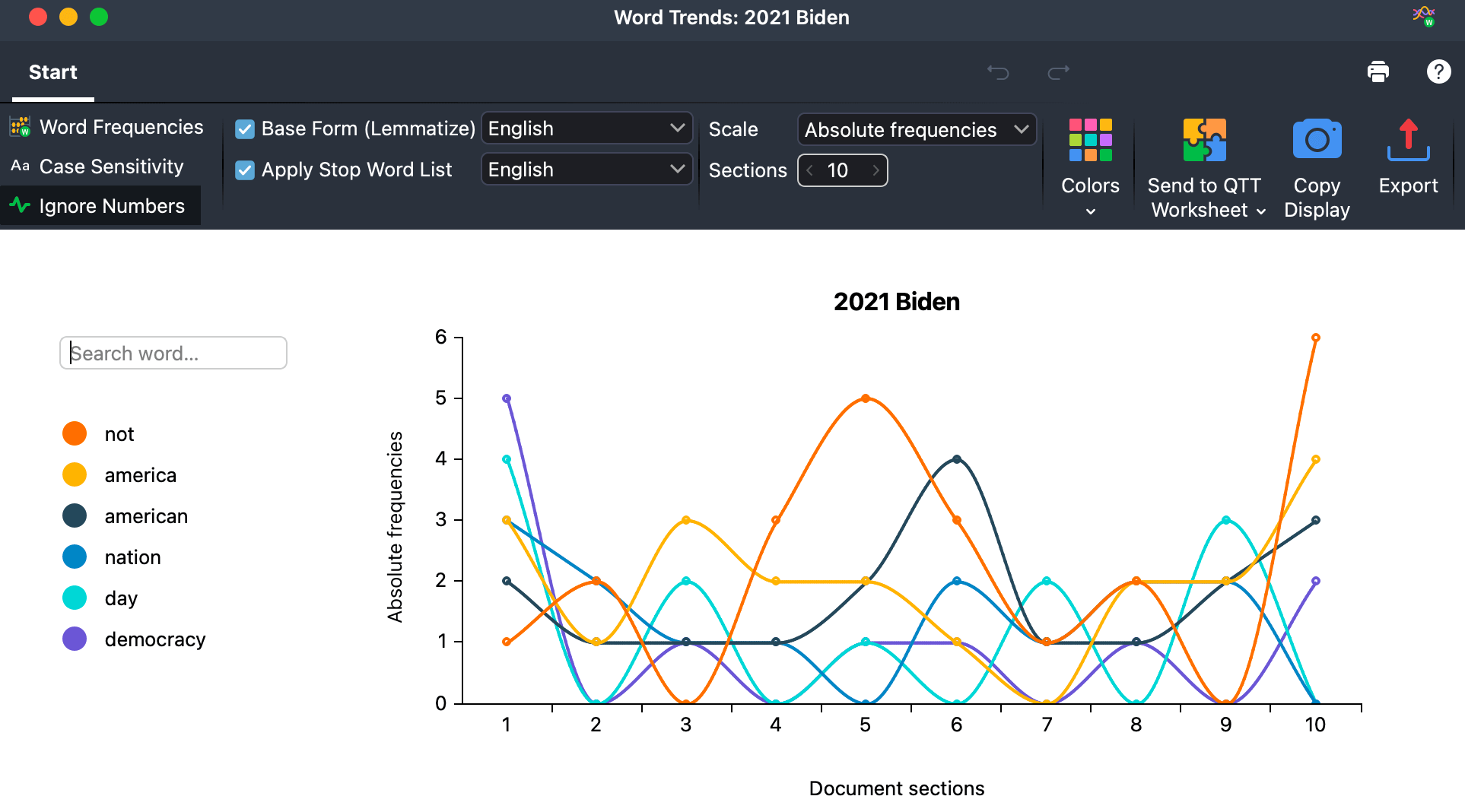
If you call Word Trends for multiple text documents, you can analyze how the use of words changes across the texts. Word Trends for multiple texts is particularly useful for time series analysis where each document represents a point in time.
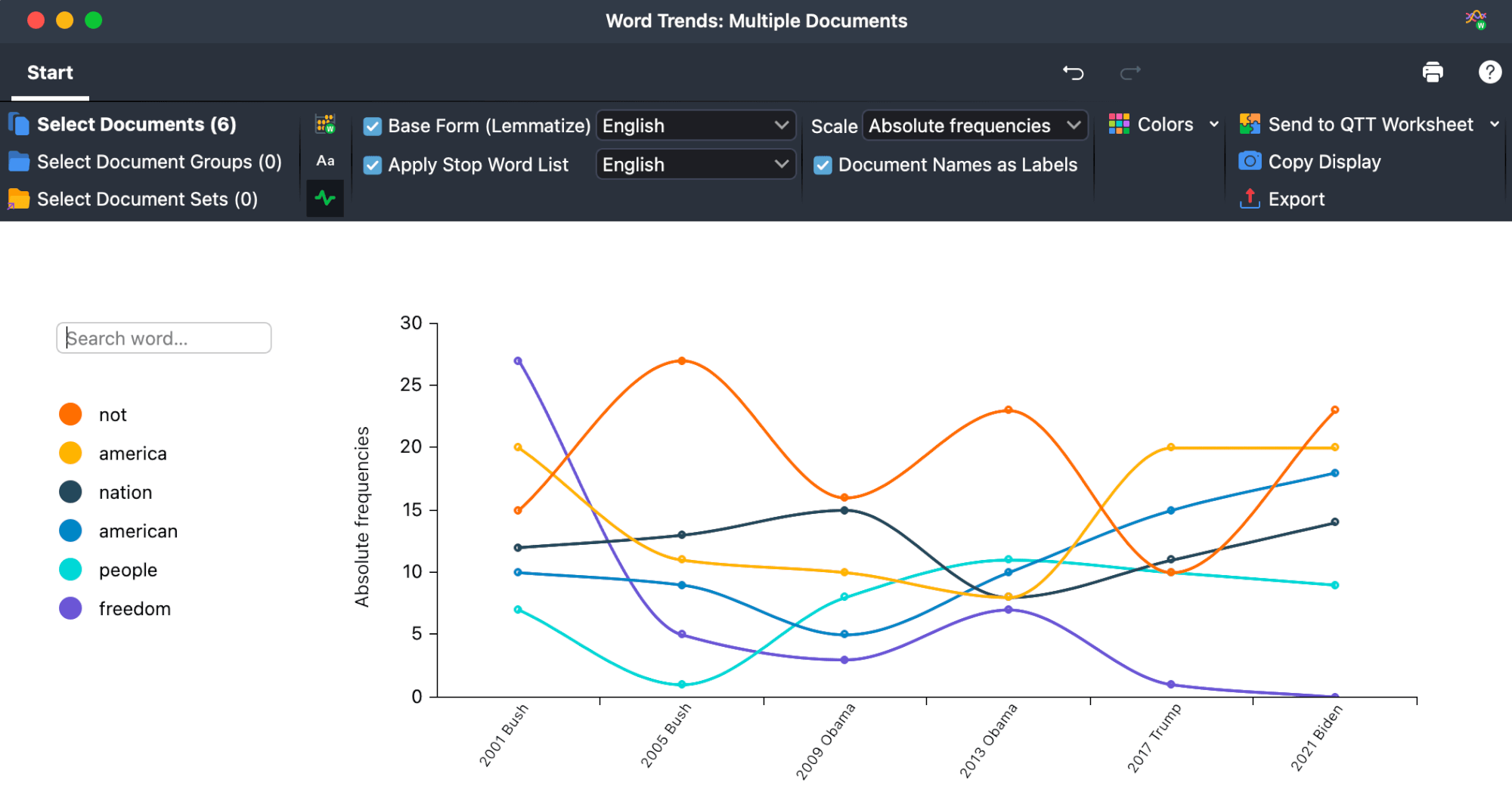
Word Trends steps for single documents
- Open the text document for which you want to analyze Word Trends.
- Select Visual Tools > Word Trends > Single Document from the main menu. The Word Trends window will open.
Word Trends steps for multiple documents
- Select Visual Tools > Word Trends > Multiple Documents from the main menu.
- You can select between comparing documents, document groups, and document sets. Select the desired unit of comparison and specify which documents, groups, or sets to include in the analysis.
- Once you select your desired unit of analysis, the Word Trends line chart will be updated.
Add, pin, and delete words
The most frequent words in the document are listed in the legend on the left side of the Word Trends window. To add words to the analysis, type the word in the text field above the legend. If you input single letters, all words within the selected document(s) beginning with that letter will be listed for selection.
Hovering over a listed word reveals options to pin or delete it. To delete it, click the ![]() red X.
red X.
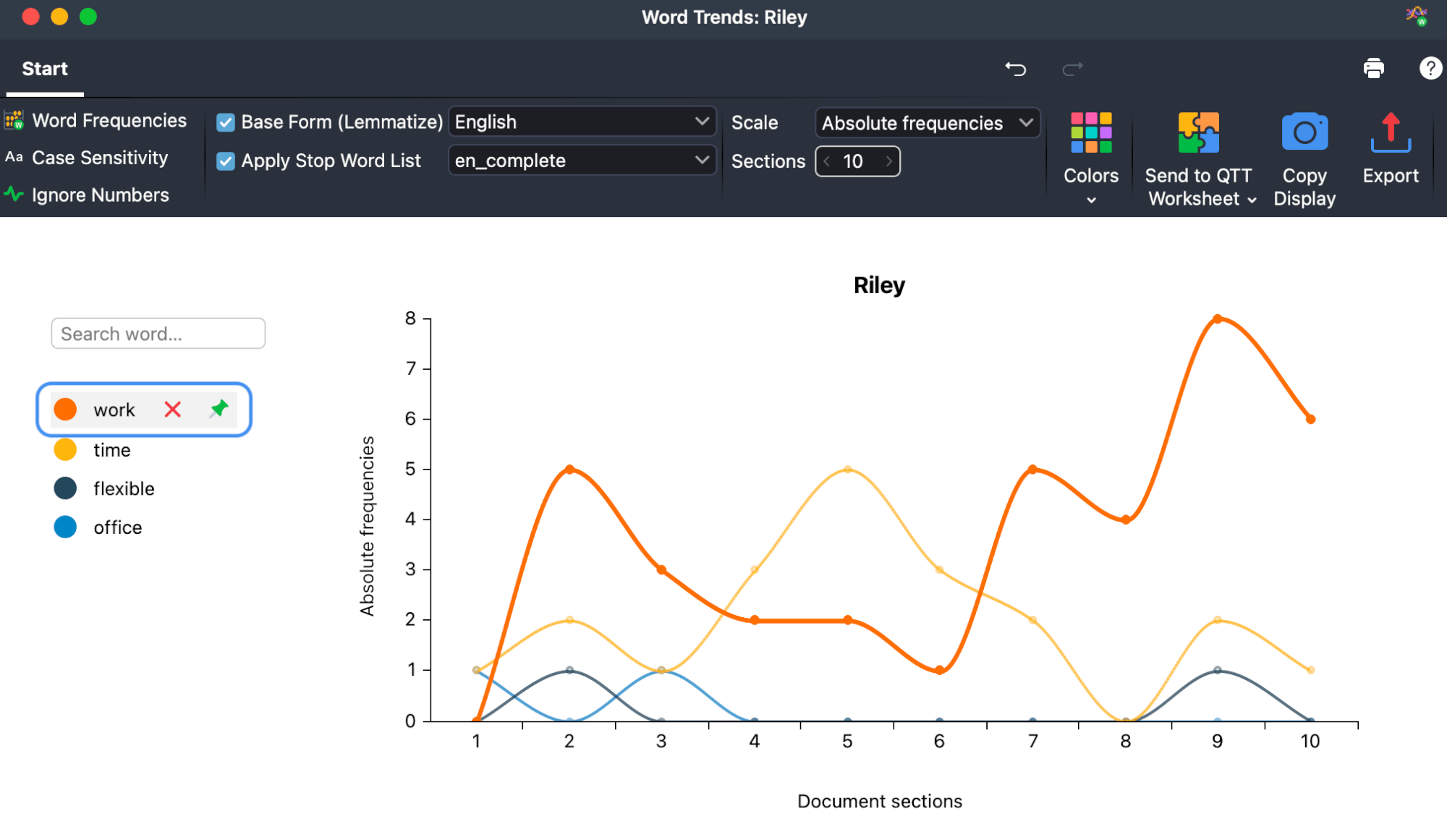
Changing any search settings in the toolbar automatically refreshes the listed words. To keep a word permanently displayed in the legend, even after adjusting settings, you can pin it. To pin a word, click the green pin icon. To unpin a word, simply click the pin icon again.
Word frequencies
Click on ![]() Word Frequencies in the Start menu tab to open a window displaying a table of all words
found in the text and their frequencies.
Word Frequencies in the Start menu tab to open a window displaying a table of all words
found in the text and their frequencies.
Options for analysis and presentation
The Start menu tab provides numerous options to customize the analysis and the results display:
- Case Sensitivity — When enabled, Word Trends differentiates single words additonally based on their letter capitalization.
- Ignore Numbers — When this option is enabled, numbers are ignored when listing the most frequent words after opening Word Trends window. Furthermore, numbers cannot be selected for display by entering them in the text field.
- Base Form (Lemmatize) — If enabled, all analyzed words are reduced to their base form, i.e., “go”, “went”, and “gone” are considered as the same word (“go”). More information about the lemma lists used can be found here. If a word has been lemmatized, you can see a list of all its lemmatized forms in the tooltip by hovering your mouse over the word.
- Apply Stop Word List — If enabled, the words from the currently selected stop word list will be ignored when listing the most frequent words after opening Word Trends window. Furthermore, the excluded words cannot be selected for display by entering them in the text field.
- Scale — Switch between absolute and relative frequencies. Both the absolute and relative frequencies refer to the respective section.
- Sections [only for single document] — Select the number of sections to be visualized.
- Display Document Names as Labels [only for multiple documents] — If enabled, the document names are displayed instead of consecutive numbers.
- Colors — Choose between different color schemes for the display.
List search hits
Click on a node in the chart to get a listing of search hits in that section or document:
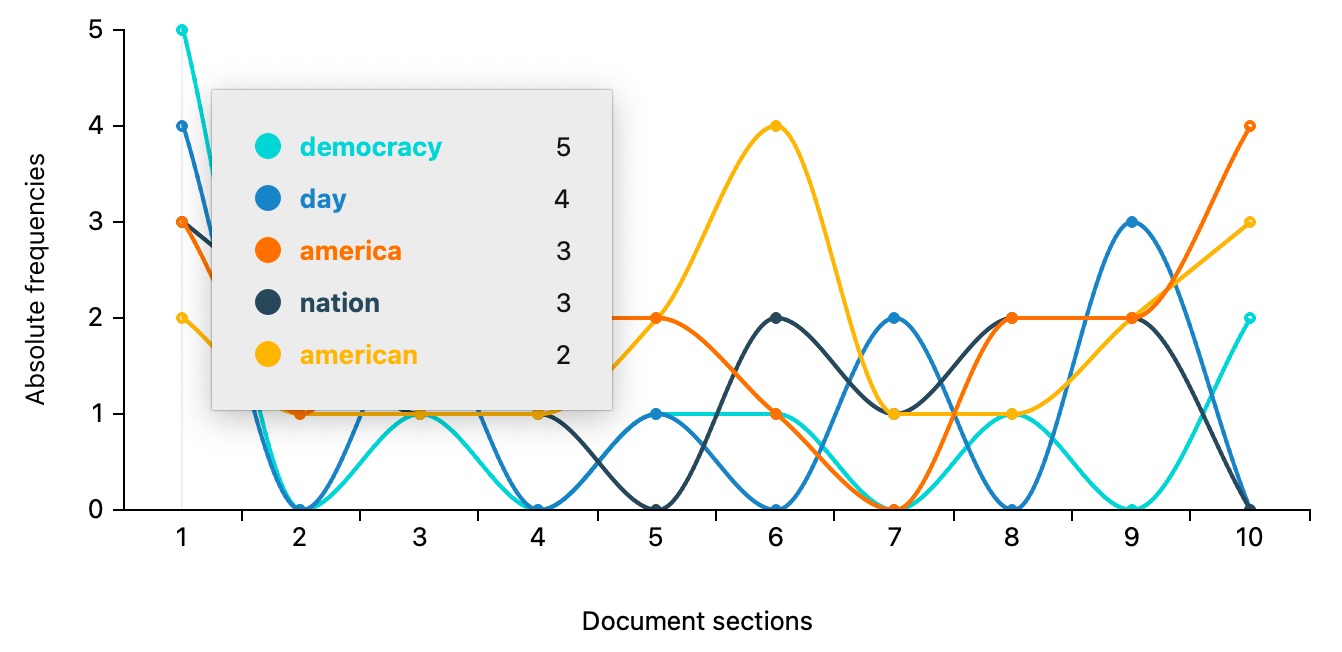
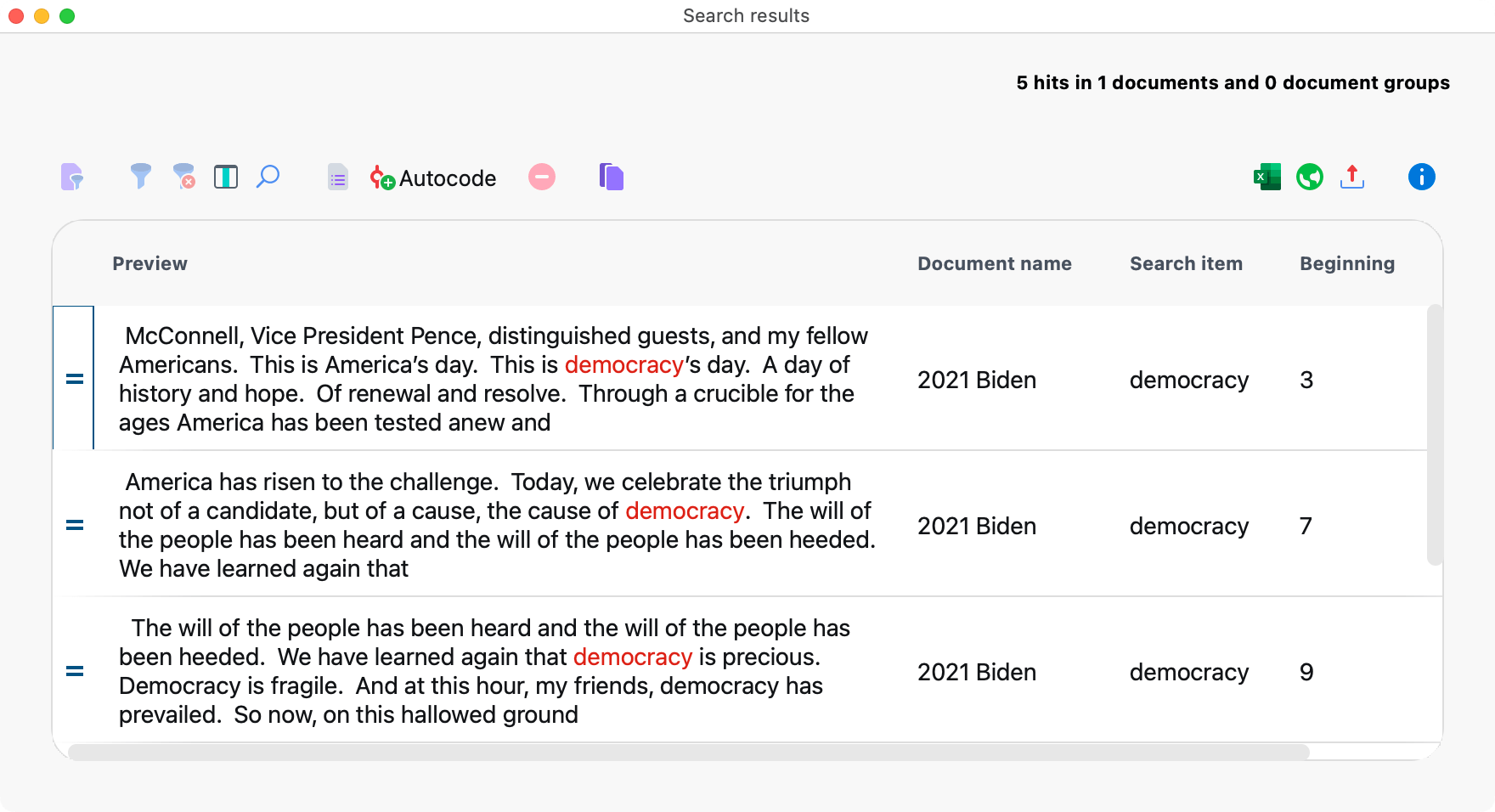
Store results in a QTT worksheet
In the Questions – Themes – Theories window of MAXQDA, you can collect and comment on all the important results of your project. In
the upper right corner of the Start menu tab of Word Trends, click on the icon ![]() Send to QTT Worksheet,
to store the results in a new or existing worksheet. The current display will be saved as an image.
Send to QTT Worksheet,
to store the results in a new or existing worksheet. The current display will be saved as an image.
Export and print results
On the top right of the Word Trends window, you will find various options to export the current view, for example, to insert it into your results report:
![]() Copy Display — Copies the current view to the clipboard so that you can paste Word Trends into a software
of your choice, for example, by using Ctrl-/cmd+V.
Copy Display — Copies the current view to the clipboard so that you can paste Word Trends into a software
of your choice, for example, by using Ctrl-/cmd+V.
![]() Export — Exports the current view as a graphic file.
Export — Exports the current view as a graphic file.
![]() Print — By clicking on the printer symbol, also at the top right, the current view can be printed directly.
Print — By clicking on the printer symbol, also at the top right, the current view can be printed directly.
